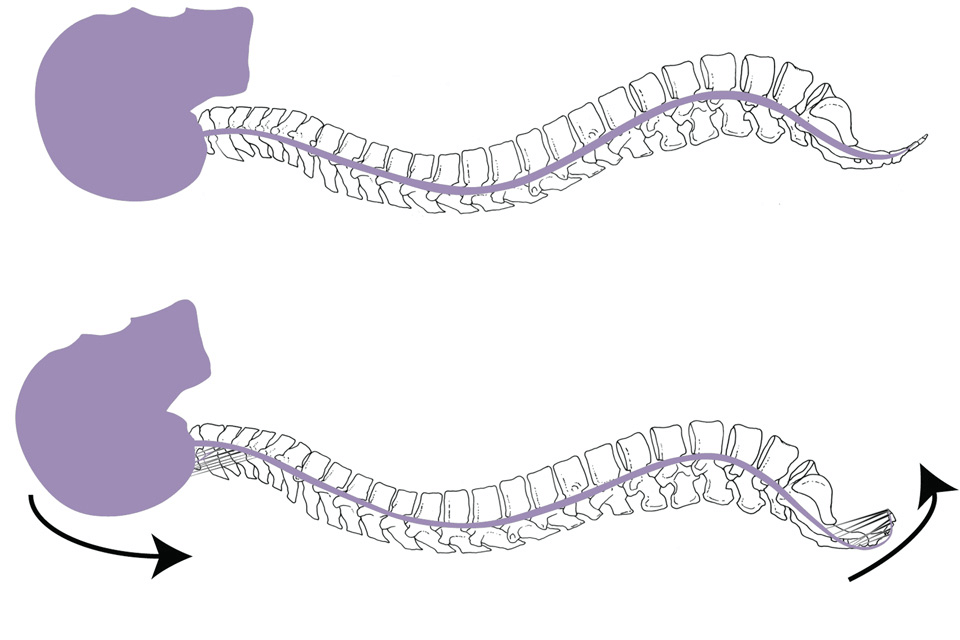We Treat Migraine and Headache Pain Without Drugs
Testimonials of Clear Passage patients who used to have Chronic Migraines/Headaches.
Migraine headaches can be caused by ‘mechanical’ factors, which are sometimes overlooked or left untreated by physicians. Clear Passage®️ therapists have successfully treated severe and recurring migraine headaches without drugs for over 20 years.
Our natural migraine headache treatment can decrease or eliminate the mechanical restrictions pulling on the base of the skull, the temples, sinus, jaws or top of the head.
Complete our online Request Consultation form to receive a free phone consultation with an expert therapist and learn whether our therapy can help you.

Causes and Frequency of Chronic Migraines and Headaches
Nearly 45 million people in the United States live with chronic headaches. About seven million report debilitating headaches that last for hours at a time, at least every two days. It is estimated that 157 million workdays are lost due to headaches and two billion dollars are spent on over-the-counter painkillers to treat headache symptoms each year.
Biomechanics of the head and neck
The head is comprised of 28 bones that articulate with each other, much like continental shelves on the earth’s surface. Some bones define the surface of our skull, while others go deep into our head where they articulate with other cranial bones, connective tissue, the brain and various glands (pituitary, hypothalamus, etc.)
The central nervous system contains the tree-trunk shaped structure (spinal cord) that connects most of the major nerves of our body to our brain. This entire structure is surrounded by strong connective tissues which act as protector and shock absorber, as our spinal cord joins and infuses with the tissues of the brain. From the brain, the spinal cord and its protective fascial sleeve (the dura) travel down through the vertebrae to its anchor at the coccyx.
Thus, the head is composed of remarkable and complex pain-sensitive structures, all of which are surrounded and infused with very strong connective tissues called fascia. Our body’s fascia is actually a continuous weave — a very strong three-dimensional ‘sweater’ that runs from the top of our head through our neck, shoulders, back and down to our feet.
The head rests at the top of the spine within this fascial sweater. Restricted tissues below the head can create unnatural pressures on the delicate structures of our head and neck, creating a straitjacket effect that causes or perpetuates headaches.

For this reason, we take a full-body approach when evaluating chronic headaches. In doing so, we find that headaches often accompany the stooped, forward head posture common to certain professions, such as dentists, hairdressers, gynecologists, and people who work in front of computers.
In essence, the head must adapt its position in space according to the position of the much larger structures below it–the spine, back and pelvis. Thus, chronic or recurring headaches are often the result of sustained muscle contraction, compensatory postures and fascial pulls or joint restrictions further down the body. For this reason, cranial imbalances that cause recurring headaches may occur from structural imbalance in the neck or torso, or even down into the pelvis, sacrum, lumbosacral junction or base of the skull.
We find a major contributory factor to headaches to be mechanical and soft tissue dysfunction of the mid-back, where thick, tight mid-back muscles create a strong pull at the base of the skull and into the head.
Further down the spine, we find that dysfunctions of the sacral joints (in the pelvis) and surrounding musculature and fascia (connective tissue) may also contribute to chronic headaches. Strong connections from the low and mid-back can pull through the neck to the base of the skull, causing or perpetuating headaches. Unless these tissues are freed from their patterns of spasm and myofascial adhesions, the headaches will continue, and eventually, worsen.

Strong attachments of the dura to the tailbone (coccyx) can cause a significant pull up through the spinal cord to its attachment at the base of the skull. Thus, when a person falls onto her/his tailbone or has a physical trauma there (auto accident, physical or sexual abuse), the tailbone can be pushed forward. When that happens, the spinal cord can be pulled down sharply, often creating a strong pull on its next attachment at the base of the skull, causing headaches. We see this condition often in our approach to migraine headache treatment.
Why do I get persistent or chronic headaches or migraines?
While some headaches are caused by medical conditions such as hormonal or endocrine imbalances, we find that most recurring headaches are caused or exacerbated by mechanical factors. These include muscle tension of the facial, cranial, neck and chewing muscles and restricted cranial bone mobility. Muscles in spasm may impair circulation within the head and neck due to their pressure on blood vessels, causing pain. Compression of blood vessels at the base of the skull can cause headaches as blood flow is slowed from leaving the enclosed skull.
Any of these conditions may be exacerbated by poor work postures. Adhesions caused by inflammation at the head, neck or related structures can also be a direct cause of headaches, as strong glue-like bonds pull on pain sensitive structures within the head.
Patients with mechanical headache pain often report that they feel a place in their head or neck “where the headache starts or resides.” We generally find this patient feedback to be accurate and quite important. It helps us examine the mechanical forces that cause or impact the patient’s chronic headaches and relieve them using hands-on techniques, without surgery or drugs.
A migraine headache can be severe, with symptoms lasting anywhere between several hours to several days. The associated pain can be pulsating or throbbing on either or both sides of the head. The headache is sometimes accompanied by visual disturbances, sensitivity to light or sound, or digestive symptoms such as nausea, vomiting, or diarrhea.
In most cases, we have found that the direct cause of or a major contributor to migraines headaches is soft tissue tightness at:
- The base of the skull,
- One or both temples or eyes
- The top of the head was the direct cause
- Areas significantly below the skull (neck, shoulders, back, surgical scars, or the coccyx (tailbone)
Treatments
Clear Passage®️ Treatment
A key part of our therapy is a thorough evaluation that can cause the biomechanics of headache symptoms. We look beyond the cranium to evaluate tightness and asymmetry at the neck, shoulders, back and even tailbone — important areas that are often overlooked when treating recurring headaches.
Primary goals of our manual therapy, the Clear Passage® Approach, is to increase mobility and decrease pain. We are highly skilled in using our hands to palpate tightened areas of the head, neck and back until the tensions release. Our unique therapy appears to reduce adhesions, decrease pain and improve mobility.
Freed of the glue-like adhesions, most patients find their cycle of recurring headaches to be significantly improved or completely eliminated after therapy. As pain begins to resolve, we work to restore alignment, balance, and mobility to the entire body, so that headaches do not return.

Other Treatment Options
Traditional migraine headache treatment methods vary considerably and many people do not obtain complete pain relief after conservative treatment such as traditional physical therapy or medications. Chiropractic care may help for a period of time but unless we address the strong, underlying adhesions that pull the cranial structures out of balance, chronic headache pain tends to persist. Injections such as nerve blocks may address the symptoms but do little to treat the cause of the headaches. Surgery for headaches is extremely rare and considered a last-resort treatment.
Testimonials
Read one of our patient testimonials below:
“For most of my adult life, I had suffered from chronic headaches. These started in my mid-twenties, and by my early thirties, they were occurring on a daily basis and becoming more severe. I had consulted with a number of different internists and neurologists who estimated that these were essentially muscle-tension headaches, but often of migraine intensity. I had explored almost every treatment available, including medications that ranged from over the counter analgesics to narcotic painkillers. I had also investigated non-traditional methods such as acupuncture, bio-feedback, and chiropractic adjustments, but none had much effect. By my late-thirties, these headaches had become incapacitating to the point where they often limited activities and even resulted in trips to the emergency room. Needless to say, this health condition was having a substantial negative impact on my life.
In those twenty-some years, I had seen nearly a dozen medical “specialists” and yet none was able to ascertain the cause of my headaches. Things changed however when I met Larry and Belinda Wurn at Clear Passage®️ Physical Therapy. In simply observing my posture, they could tell that something was not right, essentially that the muscles in my back were contracted in a manner that put excessive pressure on my neck – the basis for the unbearable headaches. It’s difficult to ascertain the initial cause, but a critical car accident in my early twenties along with many other falls and injuries over the years most likely played a part. Incredibly, I felt relief after the first treatment and within a few weeks the headaches had been reduced to a point where I no longer needed medication. Today I am nearly headache-free and when they do occur, nothing more than aspirin is needed to relieve the pain. In all of those years, doctors never suggested such a simple solution to what is a relatively common problem. I’m very thankful to Clear Passage®️ for their resolution of this debilitating health issue and strongly recommend this very effective alternative to anyone in a similar situation.”
Related Content:
Chronic Pain
- Back & Hip Pain
- Patient Story: Overcoming Chronic Pain After Multiple Traumas
- Adhesions: The Hidden Cause of Chronic Pain (Infographic)
- Childhood Surgery & Trauma
- Post-surgical Pain and Adhesions
- Anti-Inflammatories and Reducing Inflammation Naturally
- Migraines/Chronic Headaches
- Do I Have Mechanical Migraines?
- Myofascial Pain
- How Does Clear Passage® Therapy Compare to Myofascial Release and Visceral Mobilization?
- Myofascial Pain Syndrome and Fibromyalgia: What Is the Difference?
- Neck Pain
- Pain after Physical or Sexual Abuse
- Pain after Radiation Therapy
- Tailbone (Coccyx) Pain
- Sacroiliac Joint Pain
- TMJ/TMD




